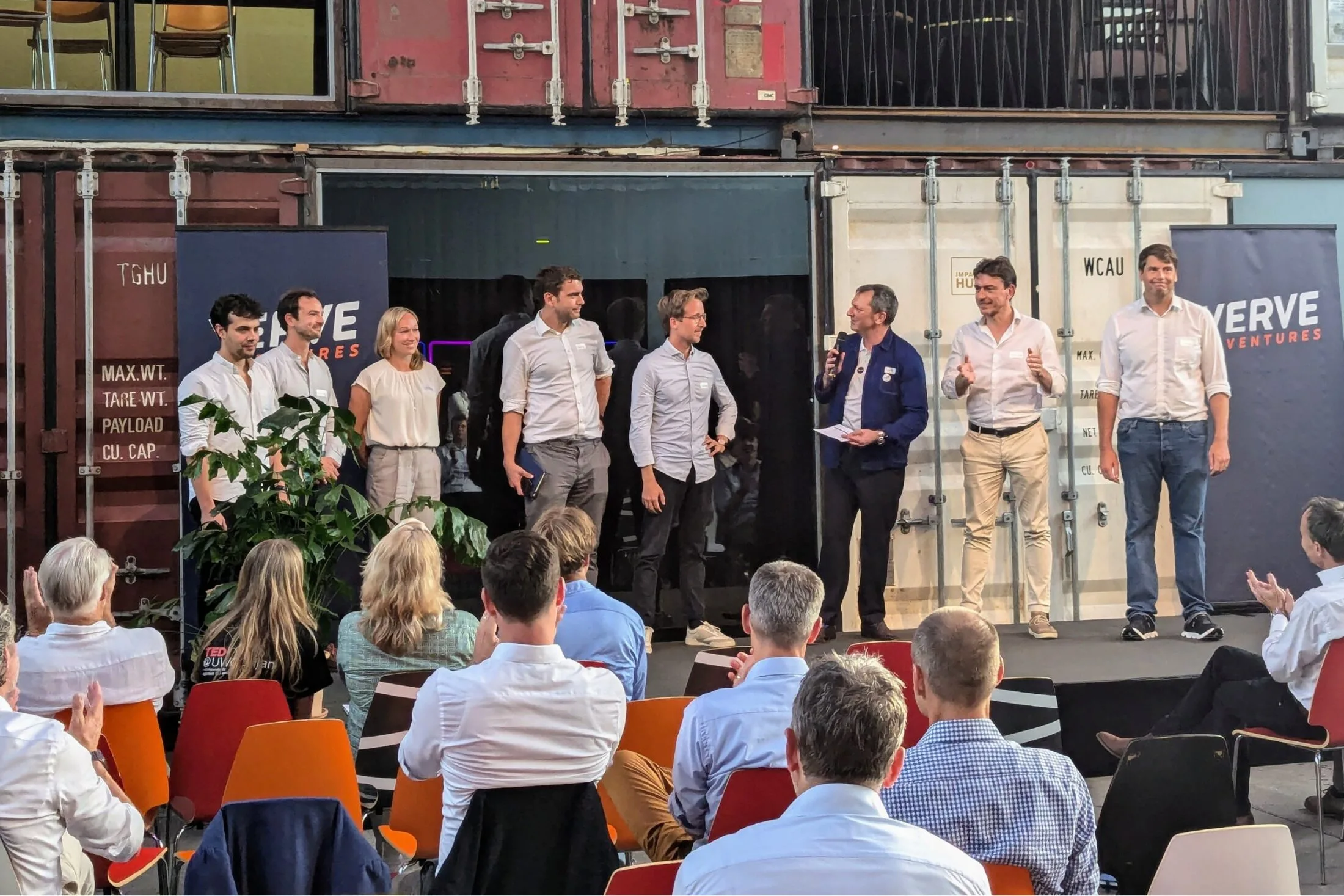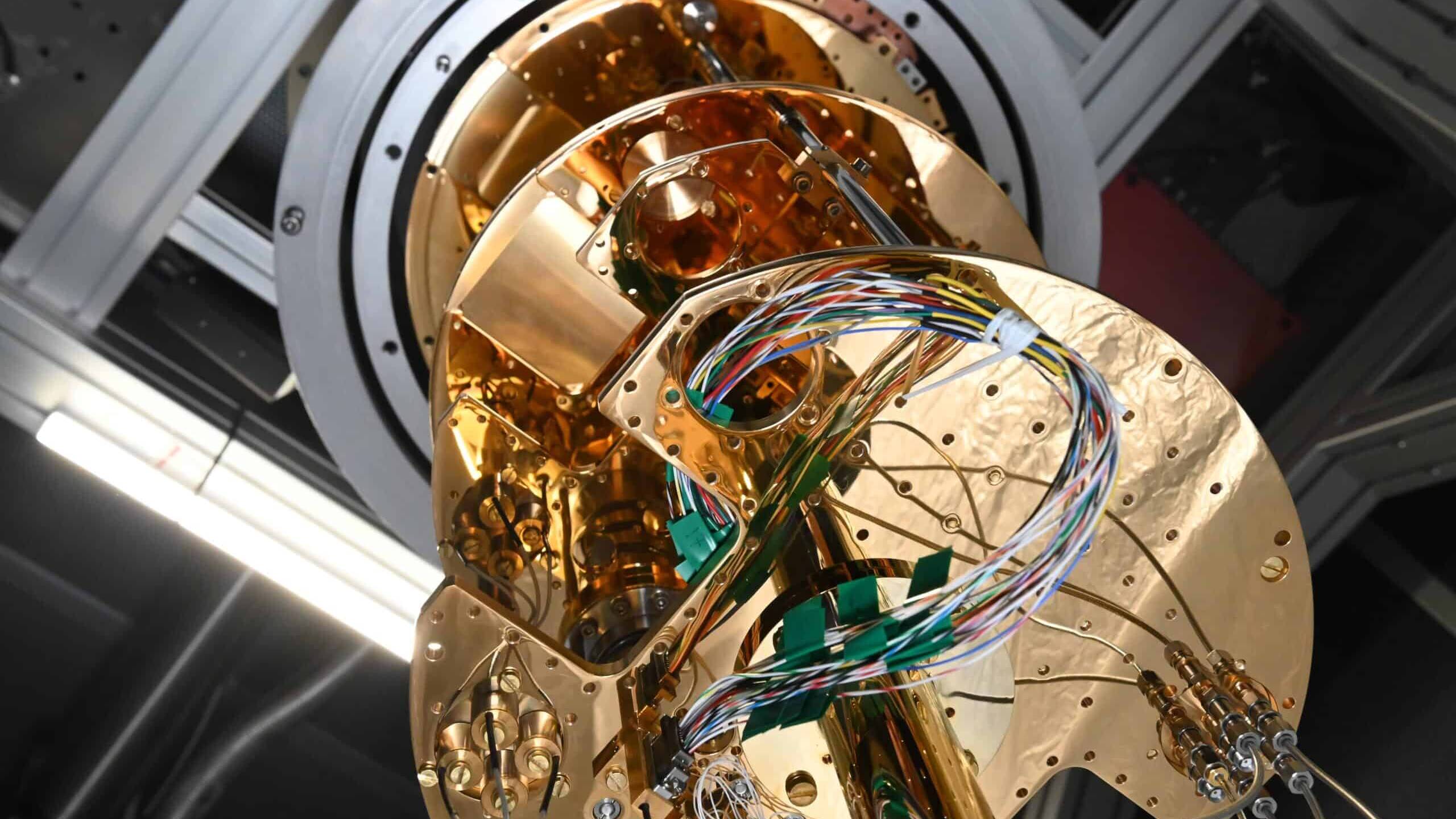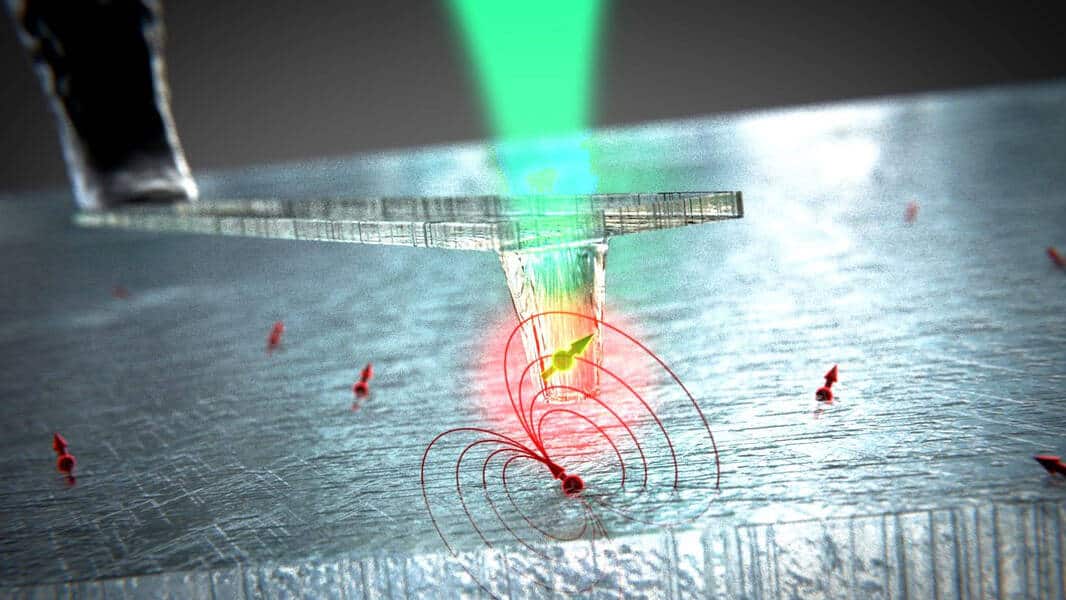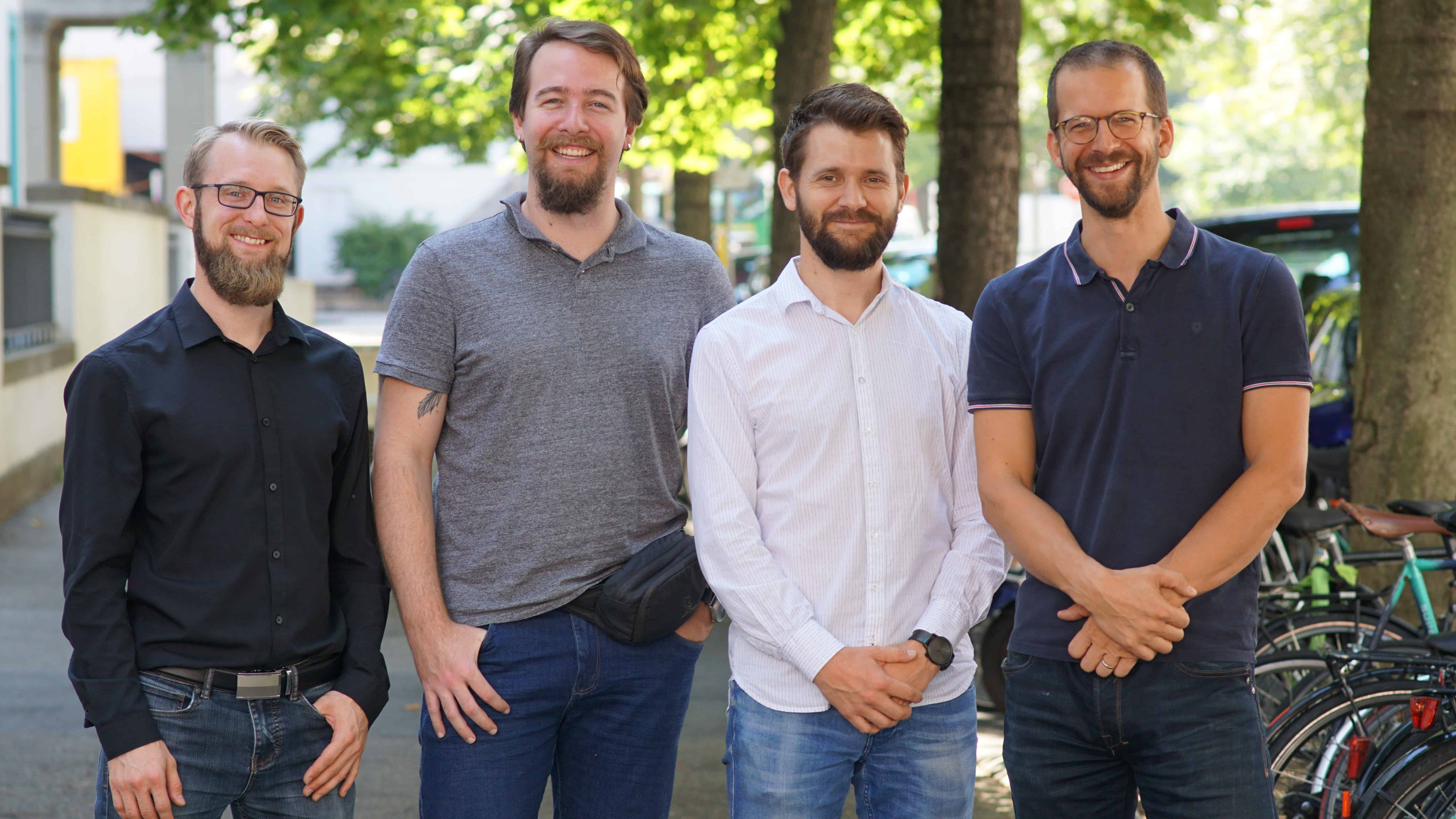Leveraging the properties of light particles to accelerate the capabilities of generative AI may sound like a distant future. But ORCA Computing’s photonic quantum computers are already in use. In our interview, Richard Murray explains the power of combining classical and quantum computers to solve complicated problems and develop novel solutions.

Co-founder and CEO, ORCA Computing
Richard Murray founded ORCA Computing in 2019 as a spin-out from the University of Oxford with Josh Nunn (CTO) and Prof. Ian Walmsley (Chairman). Richard held business development and consulting roles in photonics and quantum industries and started and led Innovate UK‘s activities in quantum technologies. He has a Ph.D. in physics from the University of Southampton.
ORCA Computing develops and sells quantum computers based on light particles (photons). These computers run at room temperature (unlike other quantum computers that need to be cooled) and integrate many existing telecom components. They result from over 30 years of research by Co-founder Professor Ian Walmsley. At the core of ORCA’s technology is a patented unique suite of components that allows single photons to be expertly controlled. One such component, the quantum memory, allows controllable, very low-loss interactions between photons in the system and atoms. This core innovation answers the fundamental challenges of optical quantum computing and enables high-quality, scalable machines for various purposes.
ORCA’s first-generation computer, PT-1, is installed in several research labs worldwide. The company has received various awards and grants. In 2022, Orca raised GBP 8 million in a Series A led by Octopus Ventures, in which Verve Ventures participated. In 2025, Orca started shipping its second-generation quantum photonic system, PT-2.
Where does your passion for quantum computing come from?
My parents were both science teachers, and I have been fascinated by science since an early age. I remember reading a book on relativity and quantum mechanics at 13, and that was my “Wow” moment. Years later, when I held commercial roles after my Ph.D., I discovered that I am not just a geek but equally fascinated by understanding human behavior. What motivates me is not just pure science, but translating it into something people care about.
Quantum computing is commonly seen as a strategic industry of the future. Since you held a position at the United Kingdom’s national innovation agency, what is the state’s role in nurturing such sectors of the future?
I was hired 2013 to start and run Innovate UK’s quantum program, the world’s first of its kind. Luckily, the EU also launched the Quantum Flagship program five years later. That being said, I am a free market advocate and believe that state intervention is not a solution for everything but just in cases where market forces alone are not strong enough to bridge the gap between technological innovation and market-ready products. Governments have a role in deep tech because this gap is so vast. When we look at many truly revolutionary technologies, such as smartphones or GPS, a fair amount of government intervention is necessary, which is easily forgotten.
Why does the world need quantum computers?
The central concepts of today’s computers date back to the 1930s. The progress since then has been enormous, and it is clear to everyone how much computers have transformed our lives. This being said, classic computing is limited by its binary logic. It is awful at solving specific problems, such as the traveling salesman problem. Quantum is the first reinvention of computing in a century. Quantum information is fundamentally different and much more powerful.
Before we discuss practical applications, let’s talk about the specific type of quantum computer ORCA is building. It is based on photonics. Why?
Photonics brings the unparallelled opportunity to make quantum more practical. When you ask someone on the street how a quantum computer looks, they will describe it as a very large machine resembling a golden chandelier. They require ultralow temperature and lots of calibration to work. ORCA’s photonic quantum computers look and behave like a standard 19-inch rack-mounted server. This is not just a point about marginal convenience, it addresses a fundamental barrier to the adoption of quantum computing by real, commercial users.
It is also already on the market. How much progress has ORCA made from its first product version to the second?
We launched the PT-1 in 2022 as a minimum viable product when there was nothing like it on the market. Its performance was just eight qubits, but this didn’t matter. Users could finally get hold of a machine that integrated with the rest of their hardware and test their first applications. This was a successful first step, as we installed nine systems worldwide. In March 2025, we shipped the first PT-2. At 90 qubits, it offers a significant step up in performance and unlocks bigger workloads. All PT-1 are upgradeable to PT-2 level; the same will be true for PT-2 when we launch the PT-3 next year. In the quantum world, where many companies speak of what they can do in the future tense, ORCA delivers actual machines to customers, who are often surprised by what they can get out of them.
What can they get from photonic quantum computing that makes a real difference in business terms?
Our PT systems enable tangible results in scientific and industrial use cases in industries such as energy, chemistry, life sciences, logistics, defence and manufacturing. They accelerate generative AI and optimization calculations.
Let’s take molecular chemistry and the search for new molecules aided by AI. Many researchers use generative numerical models for this goal. We have noticed that when ORCA’s system capabilities are added, these enhanced models start predicting new molecules that the classical model has never considered. There are other benefits, such as achieving the same output quality with less training time and data or reducing resource usage, but expanding the horizon of these generative models stands out. Our quantum computers make GenAI more creative.
How is that possible?
We don’t know yet, but that discovery blew us away. We believe that it is inherent in quantum systems and comes with the nature of quantum entanglement and the ability of qubits to express data. Combining classical and quantum models adds highly structured and correlated data.
That is indeed very surprising. Many years ago, I heard at IBM’s research lab in Zurich that the fragrance industry is leveraging traditional machine learning to create new perfumes and flavors. Interestingly, if given enough freedom, the models would come up with combinations of molecules that perfumers would have never considered mixing. But they worked very well when tested. The explanation was that highly trained humans have a particular way of doing things. Machines are more carefree. Is this analogy applicable to the increased creativity of quantum-enhanced GenAI?
Standard linear AI models are not as expressive as everyone thought they could be. They struggle with outliers. Take the old example of asking AI for a hamburger without cheese. It will struggle to develop something vaguely appetizing when all its training data contains cheese. This is because the model seeks out averages; it cannot fight against how it was trained. Quantum adds a different type of data to the mix and excels at finding the sporadic black swan event.
You spoke of highly correlated data and black swans. Are Hedge funds clamoring to acquire a PT-2 to gain a competitive edge?
Exciting advances in pattern recognition of big data sets are being made. We have discussions with financial services firms, but I cannot say who they are.
What I can talk about is another significant application of quantum, optimization. Picture any large organization with many physical assets operating under certain constraints. Imagine the planning of shipping routes, ships that must be at specific ports at a particular time or face significant penalties. This is a major headache to solve with classical computers. We are not there yet with the number of parameters we can handle, but with quantum computers, it will be possible to orchestrate assets optimally and achieve significant savings.
Will it be possible with the forthcoming PT-3?
Yes, absolutely. The PT-3 will that competitive edge to the market through what we call commercial quantum advantage – this means delivering a computing system that out performs any classical computer on price/performance. In line with our philosophy, the PT-3 will be released as a product, contained within a robust, 19 inch rack that can be easily deployed to customer sites. It will also come will a full suite of software that will show the commercial application of this system.
Your photonic quantum system may look like an ordinary server, but it has a seven-figure price tag. It could be helpful in many industries. But who are the companies that can use it now?
Their common denominator is that they are at the forefront of classical computing and AI. We are talking about firms that are already the largest users of compute, in finance, energy, defense, and automotive. The first-movers that want to be at the forefront of innovation, that do a lot of research and prepare for the arrival of more powerful systems by learning how to apply quantum models to their datasets. These are also the firms that stand to gain most by using quantum. The AI hardware market is set to grow to 400 billion dollars in the next six years, and ORCA Computing is creating the early quantum part of it.
Speaking of AI hardware, ORCA has signed a partnership with Nvidia. Could you elaborate on it?
Quantum will become a permanent component of AI models, and this partnership is an essential step towards this reality. Hybrid neural networks need classic and quantum systems integrated at the software and hardware level, which this partnership ensures. Our users can continue working on Nvidia’s Cuda development platform. Our PT systems are often sold with an Nvidia GPU cluster inside.
Orca has shipped nine PT-1s and one PT-2. To capture a part of a 400 billion dollar market, the number of systems shipped must increase.
We will. But first, we must build up ORCA’s capacity to serve customers globally and meet demand. This is a pivotal moment in the company’s development. At the same time, we are working on developing new components that will help us increase performance dramatically. ORCA has recently acquired the Integrated Photonics Division of GXC. Adding in-house photonic integrated circuit design capability is a crucial differentiator for ORCA. At the core of our technology is a chip that quickly manipulates light with few losses. Our next chip will deliver world-leading switching speed, translating to computation speed. This will get us closer to our end goal: an ORCA system in every AI factory.
Written by
Investors

Our sophisticated investors include visionary family offices, leading wealth managers, institutions, founders, and senior executives. These individuals and organizations are all committed to shaping the next generation of innovation.
More News
“We’re developing the computers of tomorrow”
Quantum computing is a key technology of the future, says Pierre Desjardins of C12 in this interview. In order not to fall behind in this technological race, European investors need to be more courageous.
“We need to build a functioning quantum ecosystem”
Since we participated in Qnami’s Seed round in 2019, the company found its product-market fit and has achieved sales above CHF 1 million. Co-founder Mathieu Munsch sees a lot more applications for quantum sensing but also warns that investments are needed to bolster the nascent quantum industry.
Qnami (Quantum Sensors): CHF 2.6 Seed round
Qnami has raised CHF 2.6 million from Quantonation, investiere, ZKB Starup Finance and High-Tech Gründerfonds. investiere contributed CHF 1 million to this round.


